In 1946, Karl Dönitz, who was großadmiral (Supreme Admiral) of the Kriegsmarine and president of Germany after the death of Hitler, sat on the bench of the accused in Nuremberg to answer for his responsibility in the Nazi regime. Among the issues he had to explain was the order that forbade rescuing Allied shipwrecks.
The irony was that the matter that should have condemned him had an unexpected effect, showing that German submarines did tend to help the survivors of their attacks and, on the contrary, highlighting the actions of US planes in the so-called Laconia Incident.
The RMS Laconia She was an ocean liner built in England for the Cunard company, measuring 183.26 meters long by 22.43 meters wide, with a tonnage of 19,695 gross tons and a speed of 16 knots. Launched on April 9, 1921, she made her maiden voyage the following year between Southampton and New York, but her fate was completely changed by the outbreak of World War II and she was requisitioned by the British Admiralty for transformation into an armed merchantman. Q> 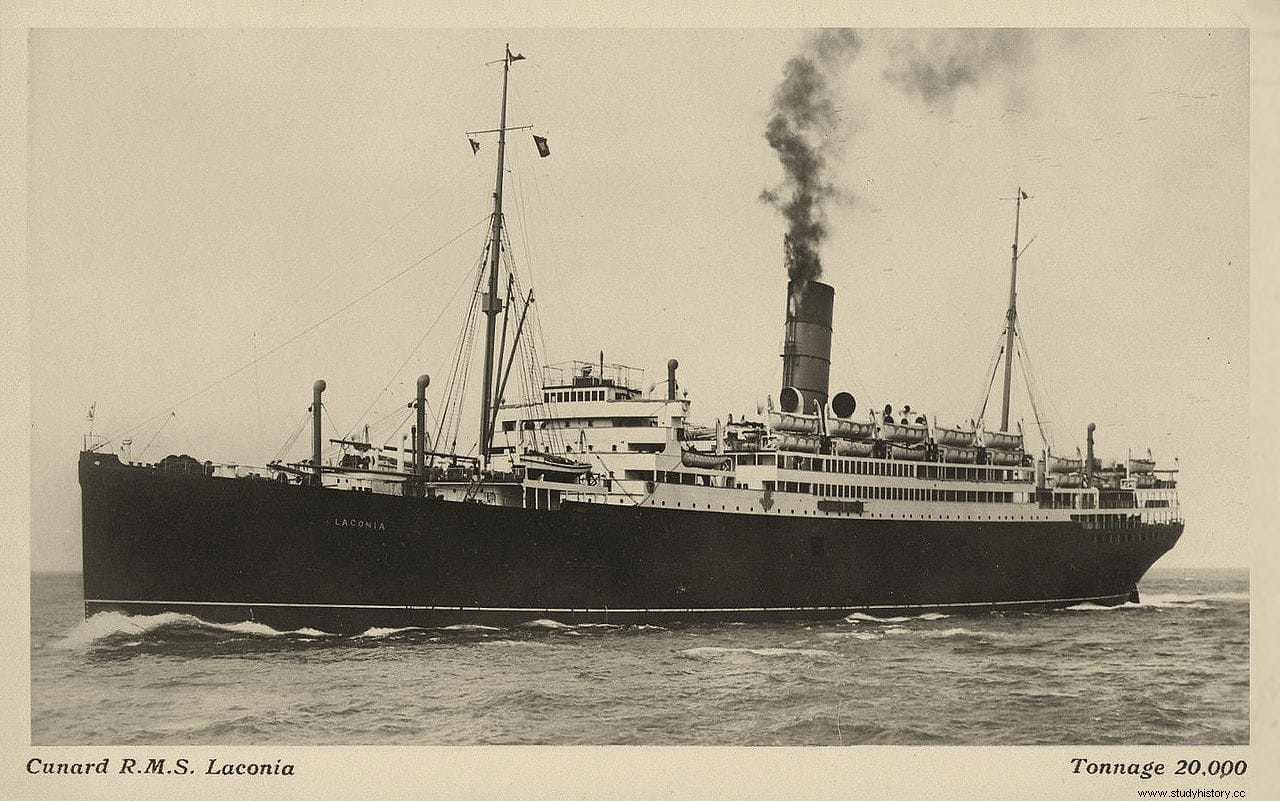
Thus, with a new equipment that included eight six-inch guns and two three-inch ones, she dedicated herself to escorting convoys across the Atlantic until 1941, the year in which she underwent a new reform to convert it into a topas transport. This new function also included the mission of transferring prisoners of war and on September 12, 1942, it carried thousands of them of Italian nationality when, sailing to the northwest of Ascension Island (practically in the middle of the ocean, between Africa and America, not far of Santa Helena), was torpedoed by a U boat German.
It was the U-156, an IXC-type submarine (long and heavy, with six torpedo tubes and three anti-aircraft machine guns) that in its eleven months of service had already accumulated an important history of sinking - a score of merchant ships - plus four other attacks - one of them to the American destroyer USS Blakeley – and a raid on the Aruba oil refinery. As a curiosity, it should be said that her captain, the Saxon Werner Hartenstein, before being assigned to the submarine weapon, had participated in the Spanish Civil War commanding several torpedo boats.
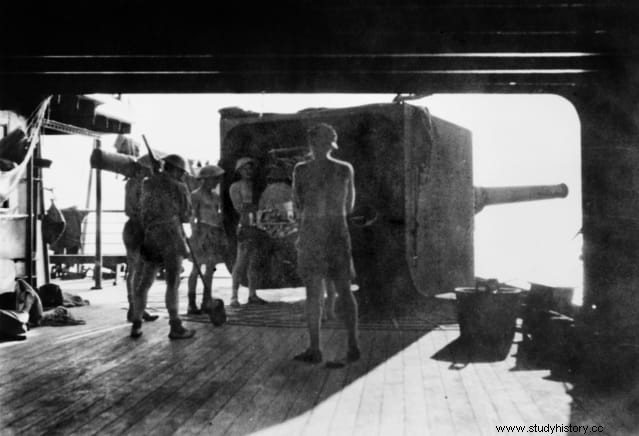
The U-156 had sailed from Lorient (France) together with the U-68 to attack a convoy. She then headed south and was patrolling some 600 miles off the Liberian coast when she sighted smoke from the Laconia stack. , which she set out to chase. Both ships had a similar speed but, since the ship was sailing in a zig zag, she was hit and two torpedoes hit her hull at 22:03, beginning to sink while a dramatic struggle for life was unleashed on board.
The Lakonia she had lifeboats for everyone, but half could not be launched due to technical issues. Although the crew abandoned the Italian prisoners, who were locked in the hold, they managed to break through the hatches or escape through the ventilation shafts and tried to reach the boats that were still being lowered.
The guards, who were Poles, bayoneted them back because their muskets were not loaded and had no ammunition. In the end, most jumped into the water, despite the fact that, as happened in the sinking of the Titanic , many of the boats were half empty and only one loaded prisoners.
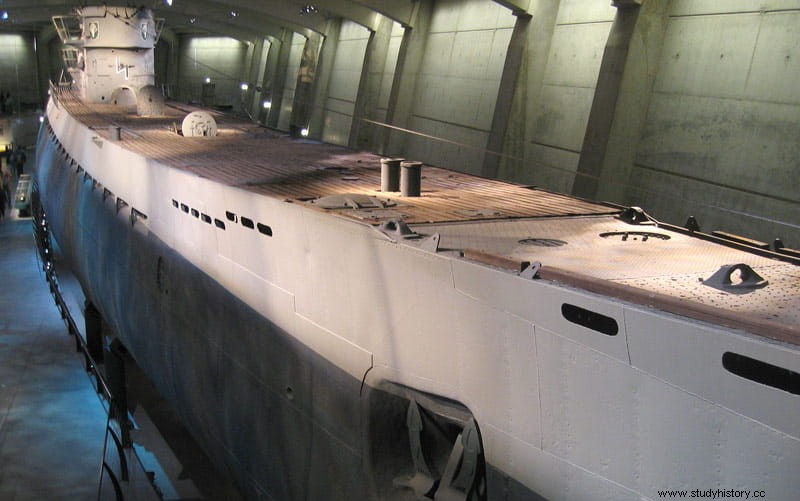
When the others desperately tried to get into one, its occupants prevented them from capsizing with axes, which soon attracted a good number of sharks to the smell of blood. The Dantesque spectacle of two thousand men and countless sharks in an agonizing struggle, the forerunner of what was to be repeated on a larger scale with the sinking of the USS Indianapolis in 1945, it was what Hartenstein found when he ordered the surface in hopes of capturing the officers. He then ordered the Red Cross flag to be raised and rescue operations began, which promised to be quite a problem given the large number of people in the water, many of them civilians.

The ship sank at 11:23 and the korvettenkapitän , which had only been able to accommodate ninety Italians on its deck, sent a coded message advising the BdU of the situation ( Befehlshaber der Unterseeboote , Supreme Commander of the Ubootwaffe or submarine weapon), a position held by Karl Dönitz, who at that time was not yet Supreme Admiral - Erich Raeder was - but konteradmiral (rear admiral). To collect the one and a half thousand shipwrecked people who were still alive, seven submersibles were sent from the so-called Eisbär Pack, a squadron that was operating off the coast of Cape Town.
The decision did not please Hitler at all, who ordered the großadmiral Erich Raeder that the flotilla return to its mission and, in exchange, U-506, U-507 (which was also type IXC) and the Italian submarine Comandante Cappellini , in addition to also requesting help from the Vichy Government to send rescue ships from its African colonies (the French responded with the cruiser Gloire , two sloops and two freighters). As they arrived, the deck of U-156 was packed with one hundred and ninety-three people, plus another two hundred spread over four lifeboats.
Hartenstein then sent a second message, open and in English, asking for help from all the ships in the area with the promise not to attack anyone who came. The signal was received in Freetown (Sierra Leone), but it was taken for a ruse, since the circumstances and the Empire Haven were unknown. , a British merchant ship (which curiously would end up scrapped in Avilés, Asturias, in 1970), was already sailing to the place to rescue the survivors. Two days later the three Axis submarines arrived and, with all the people collected, they headed to Africa to meet the French ships and transfer that human cargo to them.
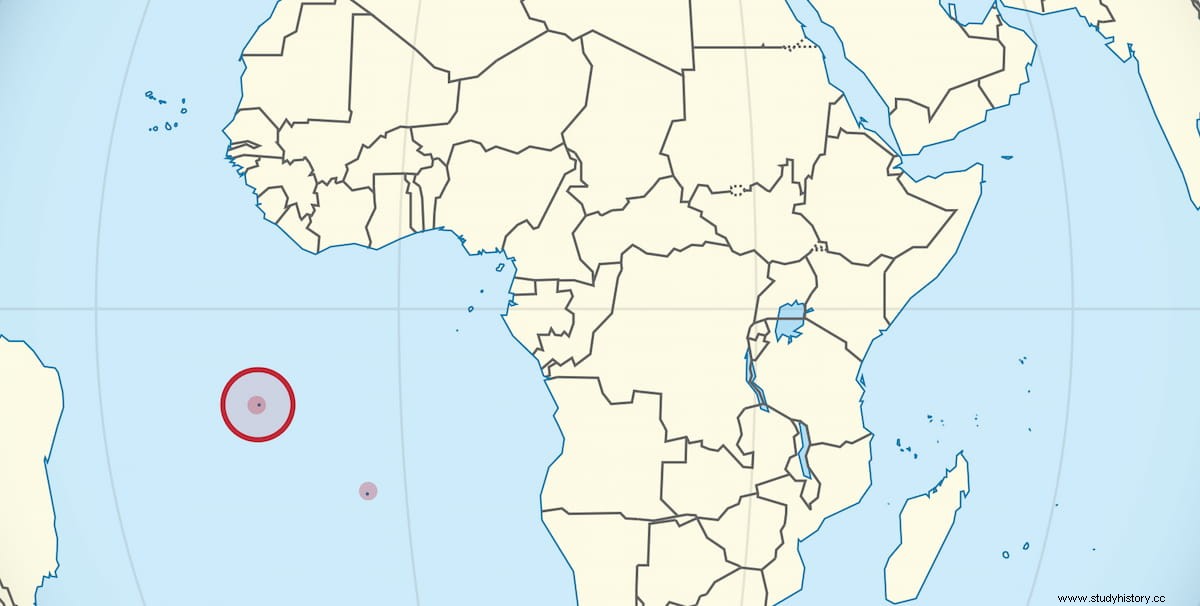
Mid-morning on the 16th, U-156, which had separated from the group, saw a B-24 Liberator bomber appear in the sky. American. An RAF officer who was in the submarine after being rescued, sent him a message in Morse, warning him that soldiers, women and children who had survived the shipwreck were on board, but the commander of the plane received the order from the Ascension base to attack as it was interpreted that he had only rescued the Italians and was a threat to the Empire Haven and the supply of the island itself.
Consequently, shortly after, the American pilot flew over the submarine again to machine-gun it in four passes; in the last one he launched two depth charges. Half of the towed boats were hit, killing a good part of their occupants, while Captain Hartenstein ordered submersion, an action that was done quite slowly to give the people on deck time to jump into the water.
Ironically, German and Italian submarines they would pick them up later thinking they were still from the first wreck; U-506 saved one hundred and fifty-one, and U-507 four hundred and ninety-one (including fifteen women and sixteen children).
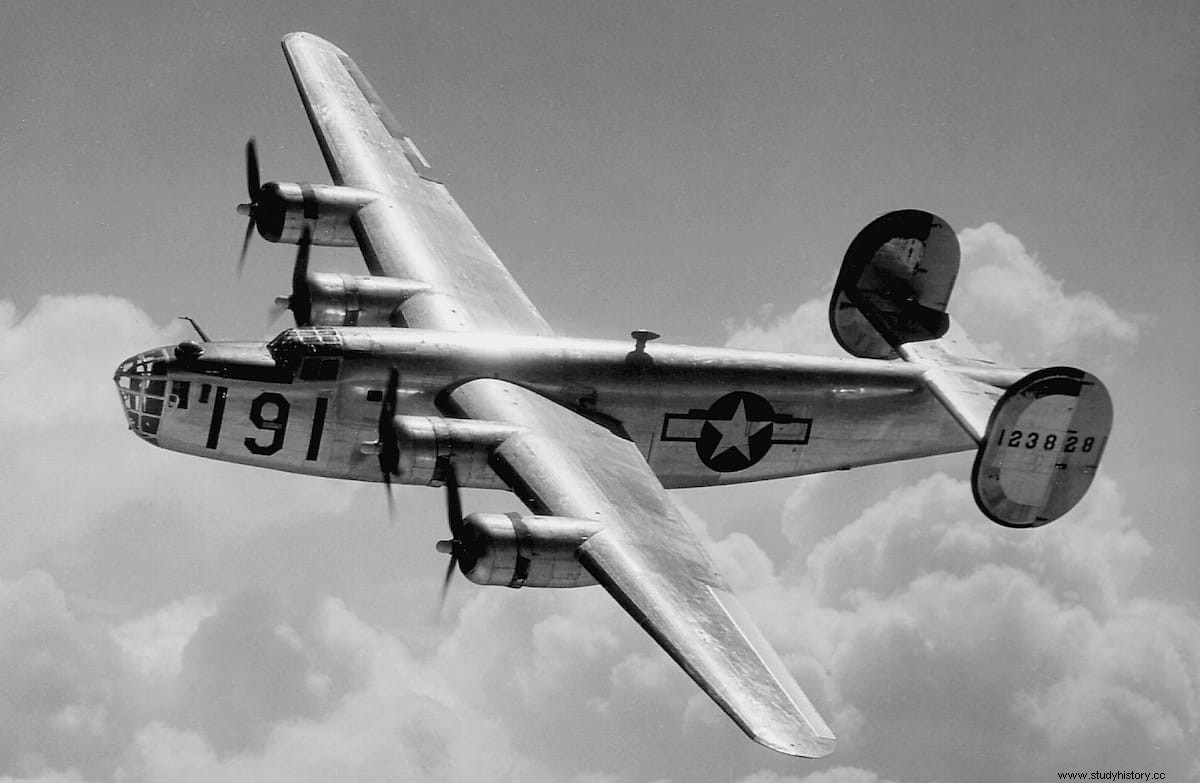
The captains disobeyed the order received to abandon the British and Polish castaways for the ships to collect. One of the two boats left over from the air attack, which U-156 had to let go of to submerge, would manage to reach the coast a month later with sixteen survivors; the other would be rescued after forty days by a British fishing boat, although by then only two people of the fifty he was carrying were left alive.
But the tragedy was not over yet. The B-24 was joined by five B-25s that took off from Ascension to search for and destroy the submarines. The first located U-506 and bombarded her, although the ship had time to submerge and escape unscathed. She rendezvoused at 14:00 on the 17th with U-507 and Gloire , who was collecting more survivors and also received those from the U boat . She altogether she loaded five hundred and ninety-seven British, three hundred and seventy-three Italians and seventy Poles; forty-eight were women and children. After a stopover in Dakar, they were disembarked in Casablanca eight days later.

They also arrived there, with more people, Commander Cappellini and another French ship, the sloop Dumont-d’Urville , which, coincidentally, during the voyage also had the opportunity to rescue the castaways from the British merchant ship Trevilley , torpedoed 12 September. British and Poles were waiting in Medina for their transfer to a concentration camp in Germany when the Allied invasion of North Africa liberated them and their destination became the USA, where they would arrive aboard the Anton . And what happened to the Italians?
Well, not much could have happened because most of them had died. Of the two thousand seven hundred and thirty-two people traveling on the Laconia only one thousand one hundred and thirteen were saved; the rest, sixteen hundred and nineteen, were drowned, killed by air raids, or eaten by sharks, and of these, fourteen hundred and twenty were Italian prisoners.
His fate was relegated to the background by the rescue of the others and by Dönitz's issuance of the Triton Null , later known as Laconia-Befehl (Laconia Order) because it was the case of the homonymous ship that motivated it.
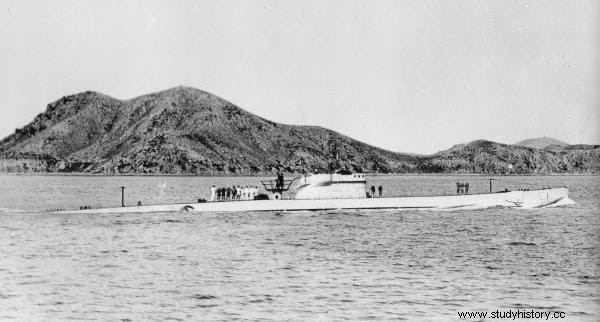
The order prohibited the rescue of shipwrecked persons to avoid attacks during operations, as had happened to U-156 and U-506, underlining the previous War Order No. 154, issued in early December 1939 and which told the officers that no one should be rescued, regardless of the weather or the proximity of land, but to worry about their own ship, preventing the enemy from returning to the front. Both brought the großadmiral to the bench (he had been promoted in 1943), accused of war crimes and crimes against peace, being exempt from the accusation of crimes against humanity.
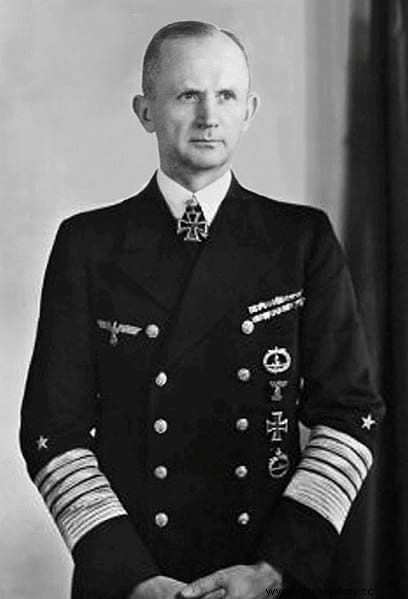
However, the trial on that issue partially turned against the accusers for several reasons. First, it brought to light the aerial bombardments carried out on the submarines when they were flying the Red Cross flag. Second, it was shown that until then it was a common custom of German sailors to collect survivors and that many continued to do so, ignoring the order. And third, it was revealed that the Allies had also adopted the same attitude of avoiding rescues.
In that sense, the American Admiral Chester Nimitz had given a similar directive to the Pacific Fleet to enter the war against Japan, while the British Admiralty ordered the sinking of any enemy ship, even if it did not seem belligerent, that tried to cross the Skagerrak ( the strait that, together with the Kattegat, separates Scandinavia from Jutland, and which was an obligatory passage for German ships that had to go out to the North Sea) and twelve cases of shooting against shipwrecked people from Royal Navy units were recorded (nine in Crete and three in Norway).
Germany and the United Kingdom had signed the First and Second London Naval Treaties (1930 and 1936 respectively), in addition to the Anglo-German Naval Agreement of 1935, which stipulated that passengers and crew members of merchant ships should be made safe. not resist an attack. As soon as the war broke out, the German submarine U-30 sank the ocean liner SS Athena mistaking it for an armed merchant ship and did not assist the shipwrecked, but in the following weeks the Royal Navy and the Kriegsmarine instructed their fleets to comply with the agreement.
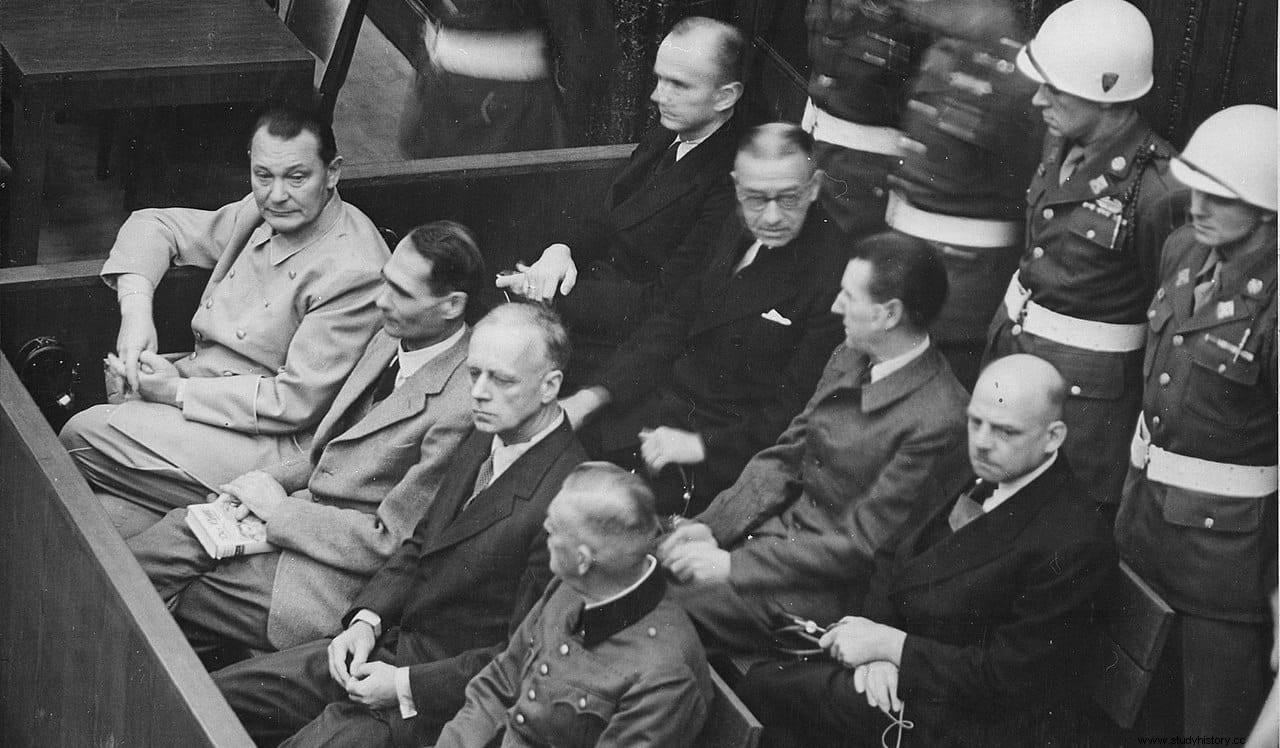
All of this became clear at the Nuremberg trial, but it was not enough to prevent Dönitz's conviction. On the one hand, as Minister of War of the Nazi regime and last president, he was convicted of crimes against peace, which according to the United Nations definition applied to «planning, preparing or initiating a war of aggression or a war in violation of international treaties, agreements or pacts «.
On the other hand, he was found guilty of war crimes for his two anti-rescue orders, which violated established protocols, since another order, Atlantik No. 56, was made public during the trial, which considered the Rescue to be one more target. Ship (the ship in charge of rescuing survivors from shipwrecks).
However, the court admitted in its ruling that there was some ambiguity in those orders, in the sense that they did not order the killing of the survivors, but instead ensured priority for the safety of one's own ship. Finally, the sentence was ten years in prison, which he served in Spandau, being released in 1956. By contrast, the air attacks on submarines were never tried; From a legal perspective, today they are also considered to be war crimes.
